Mesh
by Tuğrul Yazar | January 20, 2015 17:13
This year’s first semester at Basic Design Studio[1] was full of surprises. Together with Can Sucuoğlu and Birgül Çolakoğlu, we coordinated 9 student groups in their 4-week final project called “Arboriforms[2]“. “Arbori-” is derived from the Latin word “arbor,” meaning “tree,” and “-form” indicates a shape or form. Therefore, we can understand “arboriform” as an adjective describing something that is tree-like in appearance, structure, or form. For example, one might use the term “arboriform” to describe the branching pattern of a river system that resembles the branches of a tree, or the intricate design of a sculpture that imitates the shape and structure of a tree. Here is one of the projects of this semester. The group of students named their project “Mesh”.
However, it’s worth noting that “arboriform” is not a common term in everyday language. So its usage may be in specific contexts or fields only. In the studio, we used this as a starting point for the project. Students developed various material systems by getting inspiration from natural forms.
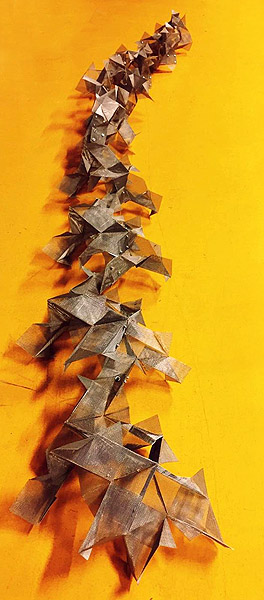
They described their project in the following paragraph; “By using the folding geometries, we managed to mimic the movement of an ivy. It is the symbiotic relationship between a tree and ivy via haptotropism and branchings. We connect the folded and pinned faces of aluminum mesh plates, creating our micro-component. Then arranging micro-components together, we came to an upper component. Further, joining the faces of the upper components created the final composition.”
Students : Aybike Yılmaz, Bilge Kardelen Bekiroğlu, and Simay Uluca
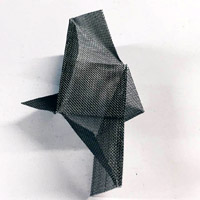
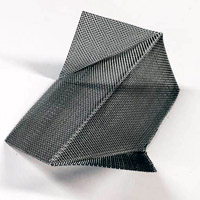
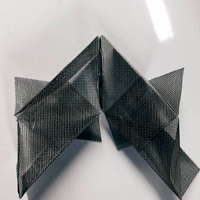
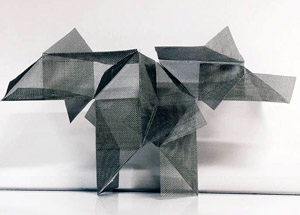
- Basic Design Studio: https://www.designcoding.net/category/education/basic-design/
- Arboriforms: https://en.wiktionary.org/wiki/arboriform
Source URL: https://www.designcoding.net/basic-design-2015-final-project-mesh/